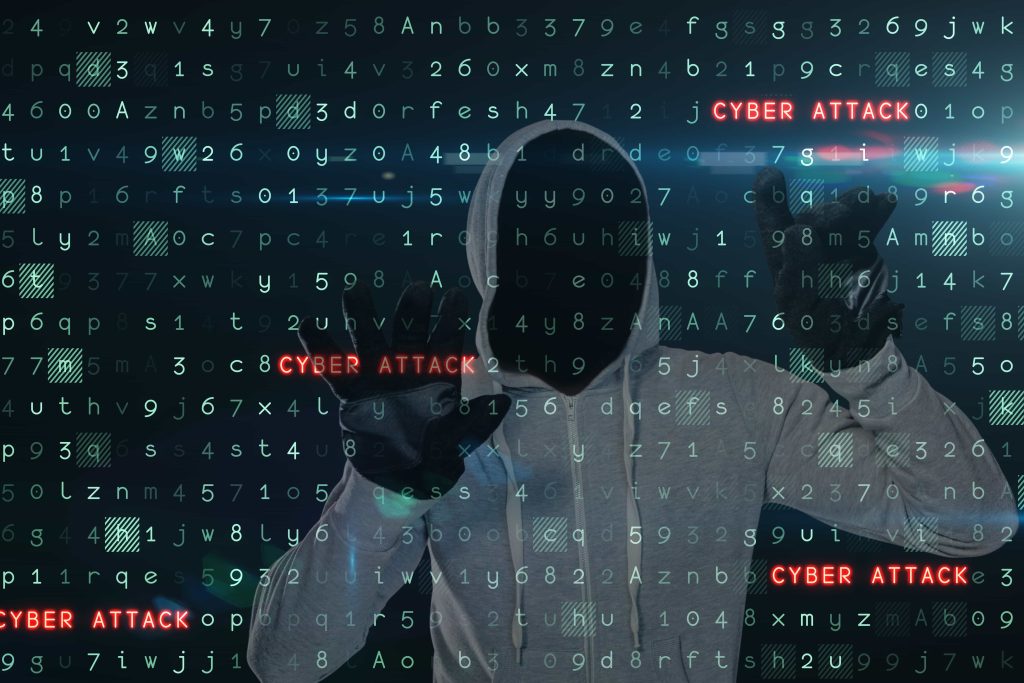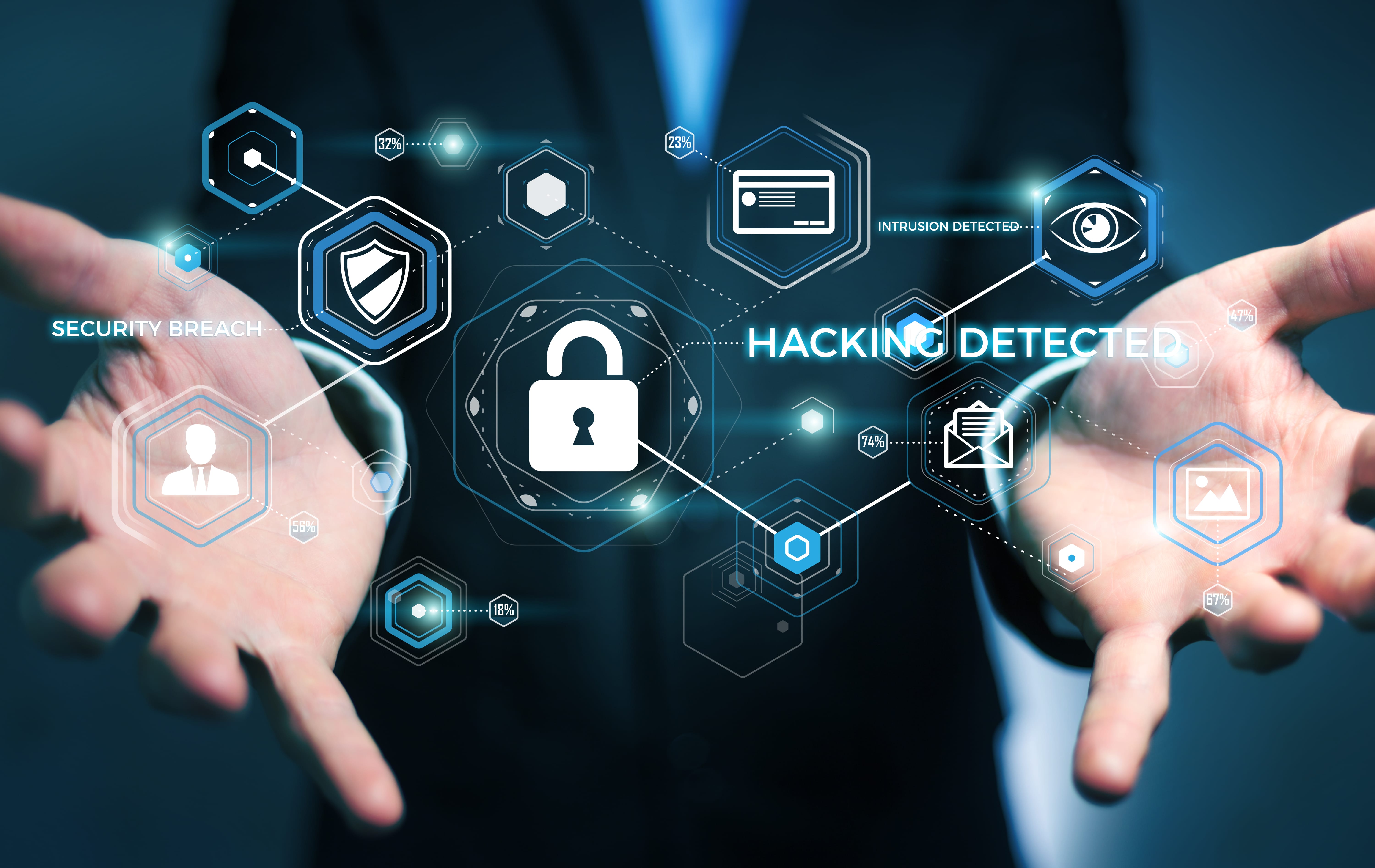
As you stand on the digital battlefield of 2024, you’re facing an ever-evolving army of cybersecurity threats.
First, there’s the rise of AI-fueled attacks, which you can counter by investing in advanced threat detection systems.
Next, deepfakes are eroding trust, but you can fight back by deploying authentication technologies.
Third, you’ll encounter sophisticated phishing schemes, but through ongoing education and vigilance, you can arm your team against them.
Then, ransomware threats loom larger than ever, demanding a dual strategy of robust backup solutions and incident response planning.
Finally, don’t overlook the vulnerabilities in your cloud and IoT devices; you can seal these by adopting strict security policies and regular audits.
You’ve got the tools to build your cyber fortress and strengthen your cybersecurity! So, let’s explore how to use them effectively.
Key Takeaways
- Rise of AI and generative AI apps prioritize speed over user security and privacy, posing risks to sensitive information.
- Deepfakes fueled by advancements in video technology are increasingly used for social engineering and are becoming harder to detect.
- Ransomware as a Service (RaaS) is evolving, allowing cybercriminals to purchase malware and customize attacks.
- Phishing and social engineering targeting the human element remain top threats, with hackers constantly developing new and sophisticated tactics.

Decoding Ransomware-as-a-Service: Unveiling the Cyber Threat Landscape
You’re facing a transformed cyber threat landscape where Ransomware-as-a-Service (RaaS) has democratized cybercrime, allowing even novices to launch sophisticated attacks.
To stay ahead, you’ll need to adopt robust mitigation strategies that address the evolving tactics of ransomware perpetrators. Understanding the nuances of RaaS is crucial for developing a defense that keeps your organization’s data secure.
Raas Democratizes Cybercrime
Frequently, you’ll find that RaaS platforms enable even novice cybercriminals to launch sophisticated ransomware attacks with ease, significantly broadening the threat landscape you must navigate. RaaS on the dark web has led to the democratization of ransomware tools, allowing those with little technical expertise to partake in cybercrime. This ease of access has resulted in a significant increase in the number of ransomware attacks.
| RaaS Impact | Description |
|---|---|
| Ease of Access | Simplifies the process for newcomers to execute ransomware attacks. |
| Significant Increase | Leads to a surge in ransomware incidents globally. |
| Democratization | Lowers the barrier to entry, expanding the pool of cybercriminals. |
To mitigate these risks, it’s crucial to implement robust cybersecurity measures and maintain vigilant cyber hygiene.
Mitigation Strategies
To effectively counter the surge in ransomware threats, you’ll need to adopt strong defensive strategies against Ransomware-as-a-Service (RaaS) platforms. A proactive approach to cybersecurity is essential:
- Proactive Cybersecurity Measures
Implement AI and machine learning for real-time threat detection.
Conduct frequent cybersecurity readiness assessments.
Cultivate a culture of security awareness among employees.
- Robust Security Measures
Establish and enforce standardized security protocols.
Utilize advanced encryption to protect data integrity.
Regularly update and patch systems to close vulnerabilities.
- Supply Chain Protection
Analyze and secure all nodes to prevent supply chain attacks.
Engage in thorough vetting of third-party vendors.
Monitor for unusual activity that could indicate a breach.
Evolving Ransomware Tactics
As cybercriminals refine their strategies, it’s essential you understand the evolving tactics of Ransomware-as-a-Service to safeguard your organization effectively. RaaS platforms have made sophisticated ransomware tools accessible to less skilled attackers, leading to a surge in attacks. These threats are becoming more intricate, often using AI and ML to target and exploit vulnerabilities proactively.
To mitigate these risks, you need a robust defense. Be proactive by staying informed about the latest ransomware trends and ensuring that your security measures can withstand these advanced threats. Educate your team to recognize signs of an attack and respond swiftly.

AI-Powered Cyberattacks
You need to be on high alert for AI-enhanced phishing schemes, as they’re becoming more cunning and personalized, easily duping unsuspecting users.
Cybercriminals are utilizing AI to craft malicious narratives that are alarmingly convincing, tricking even the most vigilant among us.
Moreover, the rapid development of AI-exploits means that attackers can swiftly create sophisticated threats tailored to exploit specific vulnerabilities.
AI-Enhanced Phishing Schemes
Deception has reached new heights in cybercrime as AI-powered phishing schemes become increasingly sophisticated, directly threatening your organization’s security. These ai-enhanced phishing schemes leverage the use of AI to craft convincing messages that can trick even the most vigilant users.
Here’s what you need to watch out for:
AI-Enhanced Phishing Schemes
- Utilize machine learning to personalize attacks
- Exploit access to platforms for large-scale distribution
- Mimic trusted sources with alarming accuracy
To mitigate these risks, reinforce your defenses against sophisticated ransomware tools and adapt to the diversity in operating systems within your network. Educate your team on the nuances of these threats and ensure they’re equipped to recognize and respond to them.
Stay vigilant and proactive to protect your digital landscape.
Malicious AI Narrative Crafting
Cybercriminals are harnessing artificial intelligence to craft narratives that convincingly mimic legitimate communications, further complicating your defense against these stealthy cyberattacks. AI poses a significant challenge as it’s used in generating sophisticated ransomware tools and attack vectors using AI. You must be proactive to safeguard against emerging threats that are becoming more nuanced.
| Threat Type | Description | Mitigation Strategy |
|---|---|---|
| Sophisticated AI Narratives | Using AI to create legitimate-looking messages | Train staff on recognizing AI patterns |
| AI-Powered Ransomware | Generating sophisticated ransomware tools with AI | Implement advanced threat detection |
| AI-Driven Attack Vectors | Crafting complex attack vectors using AI | Employ AI-based security solutions |
Stay informed and agile to adapt your cybersecurity posture to these evolving hazards.
AI-Exploit Rapid Development
With hackers’ adoption of AI-powered tools, your organization’s defenses are facing unprecedented challenges in detecting and countering rapid exploit development. AI’s ability to generate sophisticated threats at an alarming rate means you must be vigilant and proactive.
AI-Powered Cyberattacks:
- Speed: AI accelerates the creation of malware, outpacing traditional security measures.
- Variety: A range of attacks, from software supply chain attacks to data breaches, are now more complex.
- Evasion: AI-driven threats can sidestep detection systems, making prevention increasingly difficult.
Understand that AI isn’t just a tool for innovation but also a weapon for cybercriminals. Your strategy must adapt to anticipate and mitigate these evolving threats. Secure your organization by staying ahead of the AI threat curve.
Navigating Supply Chain Vulnerabilities: A Crucial Cybersecurity Imperative
You can’t afford to overlook the risks that come with supply chain vulnerabilities; they’ve become a prominent gateway for cyber threats.
It’s imperative that you strengthen your vendor assessments and enhance transparency measures to safeguard your operations.
Strengthen Vendor Assessments
Assessing your vendors’ cybersecurity practices is essential to mitigate the heightened risk of supply chain attacks that are plaguing global networks. Your approach to vendor assessments should be thorough and continuous, ensuring that all third-party partners align with your security standards.
Here’s how to enhance your strategy:
Conduct Rigorous Vendor Assessments
- Establish strict criteria for cybersecurity checks
- Regularly review and update assessment protocols
- Include penetration testing and security audits
Foster a Culture of Mutual Trust
- Demand transparency in third-party security practices
- Share best practices and collaborate on threat intelligence
- Create joint response plans for potential breaches
Implement a Multi-Layered Defense Strategy
- Avoid single points of failure in supply chains
- Diversify vendors to mitigate threats
- Use contractual agreements to enforce security compliance
Enhance Transparency Measures
To navigate the complexities of supply chain vulnerabilities, it’s essential to enhance transparency measures among your vendors and partners. The opaque nature of hardware production and global supply chains demands stringent oversight. Without standardized security protocols, the trust placed in third-party partners can expose your organization to significant risks.
Ensure that each link in your supply chain is scrutinized and that vendors adhere to clear, rigorous security standards. The lesson from incidents like SolarWinds is clear: transparency isn’t just about visibility; it’s about accountability and the ability to verify that partners are upholding their end of the cybersecurity bargain.
Implement Robust Protocols
Building on the need for enhanced transparency within your supply chain, it’s vital to implement robust protocols that safeguard against the multifaceted risks posed by third-party dependencies. You must adopt robust defensive strategies and standardized security protocols. Here’s how:
Proactive Approach
- Conduct regular vulnerability assessments.
- Train employees on cybersecurity best practices.
- Engage in continuous monitoring for suspicious activities.
Mitigate Risks
- Apply stringent access controls.
- Use encryption to protect data in transit and at rest.
- Implement multi-factor authentication for enhanced security.
Comprehensive Cybersecurity Measures
- Develop incident response plans for quick action when threats are detected.
- Ensure regular software updates and patch management.
- Collaborate with suppliers to maintain high security standards across the board.
Safeguarding Critical Infrastructure: A Comprehensive Approach to Cybersecurity
As you consider the cybersecurity of critical infrastructure, it’s vital to understand the severe consequences of an attack on sectors such as energy, healthcare, and transportation.
You’ll need to implement sector-specific security protocols that address the unique vulnerabilities of these interconnected systems.
Infrastructure Attack Consequences
Amid the rising tide of cyber threats, you’re facing a stark reality: an attack on critical infrastructure can cripple essential services and wreak havoc on the economy and national security. As you ponder the gravity of these risks, consider the following:
Targeting of critical infrastructure
- Heightens the impact of attacks on national security
- Disrupts essential services like energy and healthcare
- Damages public trust and economic stability
Infrastructure attack consequences don’t just stop at immediate disruptions; they can lead to long-term vulnerabilities in your nation’s security and prosperity. It’s vital to recognize the importance of safeguarding these systems with a comprehensive cybersecurity strategy that prevents malicious actors from disrupting or gaining control of critical systems.
Sector-Specific Security Protocols
While you must recognize the severity of attacks on critical infrastructure, you’ll also need to implement sector-specific security protocols tailored to the unique vulnerabilities of systems such as energy, healthcare, and transportation.
It’s essential not to rely solely on standardized security protocols, as they may not address the complex nuances of your sector’s supply chains and operational models. Failure to adopt these bespoke measures increases the risk due to more sophisticated cyber threats.
Each sector must analyze its own risk landscape and develop a robust, responsive cybersecurity strategy that includes both prevention and mitigation.
National Security Implications
You must recognize that securing critical infrastructure against cyber threats is vital to protecting national security and supporting the economy. Here’s a comprehensive approach to safeguarding our nation:
- Importance to National Security
- Critical infrastructure ensures public safety and continuity of government
- Cyberattacks could cripple essential services, from power grids to hospitals
- Threats to Critical Infrastructure
- Nation-state actors utilizing sophisticated ransomware tools
- Disruption potential heightening national security implications
- Robust Defensive Strategies
- Implementing layered security measures and real-time threat intelligence
- Regular audits and updates to respond to evolving cyber threats
Understanding these points can lead to stronger defenses against the ever-present dangers in our interconnected world.
Interconnected Systems Vulnerability
As we bolster our national security by protecting critical infrastructure, it’s essential that you’re aware of the vulnerabilities in interconnected systems that could be exploited by cyber threats.
IoT devices, integral to modern operations, often lack standardized security measures, making them easy targets. Cybercriminals are leveraging ransomware tools to disrupt supply chains, demanding payments and threatening national economic stability. They’re utilizing sophisticated attack vectors that can bypass traditional defenses.
It’s crucial that you take proactive steps to mitigate these risks. Implement robust cybersecurity protocols, ensure regular software updates, and educate your team on the dangers of phishing and social engineering.
Resilience Through Collaboration
To effectively safeguard critical infrastructure against cyber threats, you’ll need to collaborate with industry peers, government entities, and cybersecurity experts. As the cybersecurity landscape continues to evolve, robust defensive strategies are essential.
Here’s how you can develop a comprehensive approach:
Proactive Approach
- Regularly update security protocols
- Anticipate emerging threats
- Engage in continuous threat intelligence sharing
Partnerships and Collaboration
- Join cybersecurity alliances
- Participate in industry-wide simulations
- Share best practices and lessons learned
Robust Defensive Strategies
- Implement multi-layered security measures
- Conduct frequent risk assessments
- Train employees on cybersecurity awareness
Tackling IoT Security Challenges: Fortifying the Internet of Things
As you embrace the conveniences of the Internet of Things (IoT), it’s crucial to recognize the security challenges that come with it.
You’ll need to push for standardized protections across all your devices to reduce vulnerabilities.
Moreover, securing consumer IoT must become a priority as the attack surface expands with every new gadget added to your network.
Standardized IoT Protections
You’ll need to adopt standardized IoT protections to fortify your devices against the increasingly complex cybersecurity threats targeting the Internet of Things. The general lack of standardized security measures across diverse IoT ecosystems has created a critical vulnerability.
To address this:
Standardized Security Frameworks
- Develop and implement cross-industry security standards
- Ensure your IoT devices in consumer and industrial sectors comply
Robust Defensive Measures
- Install regular updates and patches
- Use advanced encryption and multi-factor authentication
Awareness and Training
- Educate users on the importance of security
- Promote a culture of cybersecurity awareness within your organization
Expanded Device Attack Surface
With the rapid growth in IoT devices, you’re facing an expanded attack surface that requires diligent security measures to protect your network. The IoT landscape is becoming increasingly complex, with the expansion of IoT devices leading to a broad and often vulnerable attack front. Every new internet of things (IoT) gadget you integrate into your system could potentially open doors to cyber threats.
To address the increased targeting of critical infrastructure, it’s essential to harden the defences of your IoT ecosystem. This means regularly updating firmware, employing strong authentication methods, and monitoring your network for suspicious activity.
Securing Consumer IoT
To secure your home’s IoT devices, it’s essential to start by changing default passwords and ensuring firmware is regularly updated. In consumer settings, IoT gadgets are often the weak links, susceptible to a myriad of threats and vulnerabilities. Here’s how you can fortify your devices:
Implement Robust Defensive Measures
- Use strong, unique passwords for each device
- Enable two-factor authentication when available
- Regularly check for and install security updates
By adopting these practices, you’ll significantly reduce the risk of your IoT devices becoming gateways for cybercriminals.
Frequently Asked Questions
What Are the Threats to Cybersecurity in 2024?
You’re up against sophisticated AI-driven attacks, deepfake-enabled scams, and invasive ransomware in 2024.
Hackers are hijacking chatbots to phish info, while ransomware-as-a-service lets anyone launch attacks.
Stay sharp against phishing; it’s evolving fast.
Protect yourself by updating security protocols, training for new threats, and enforcing strict access controls.
What Are the 5 Main Threats to Cyber Security?
You’re facing a diverse array of cyber threats:
- Sophisticated ransomware attacks
- AI-driven phishing schemes
- Vulnerabilities within your supply chain
There’s an increased risk to critical infrastructure and IoT devices, underscoring the need for heightened security measures.
To stay safe, it’s vital to stay informed and proactive. This includes implementing robust defenses and training to mitigate these evolving dangers to your cyber well-being.
What Are the Main Threats to Information Security and How Can They Be Mitigated?
You’re dealing with threats like phishing, malware, and hacking attacks. To mitigate them, you’ll want to use strong passwords, enable multi-factor authentication, and keep your software updated.
Educate yourself on the latest tactics used by cybercriminals, and don’t click on suspicious links or download from untrusted sources.
Regularly back up your data, and consider using a reputable security solution to protect your information.
Stay vigilant and informed to stay safe.
What Are 5 Ways to Prevent Cyber Attacks?
To prevent cyber attacks, you’ll want to:
- Update software regularly.
- Use strong passwords.
- Be wary of phishing emails.
Don’t forget to:
- Back up your data frequently.
- Ensure your network is secure.
These steps can significantly reduce your risk of falling victim to cyber threats.
Conclusion
In the ever-changing landscape of cybersecurity, staying ahead of the curve is crucial. As you navigate the challenges posed by Ransomware-as-a-Service, AI attacks, supply chain vulnerabilities, and the intricacies of safeguarding critical infrastructure and IoT devices, remember: you’re not alone in this battle.
Computronix stands at the forefront, providing top-tier IT support services that are tailored to fortify your defenses. Our commitment to excellence and proactive measures ensures that your organization remains resilient against emerging threats. Don’t wait until it’s too late – reach out to Computronix today for comprehensive IT support that goes beyond the conventional.
In the face of cyber adversaries, your decision to partner with Computronix isn’t just a choice; it’s a strategic move towards enhancing your cyber resilience. Safeguard your data, secure your operations, and empower your organization to thrive in the digital age. Contact Computronix now, because when it comes to your IT support needs, we’re here to help – safeguarding your future starts with us.










